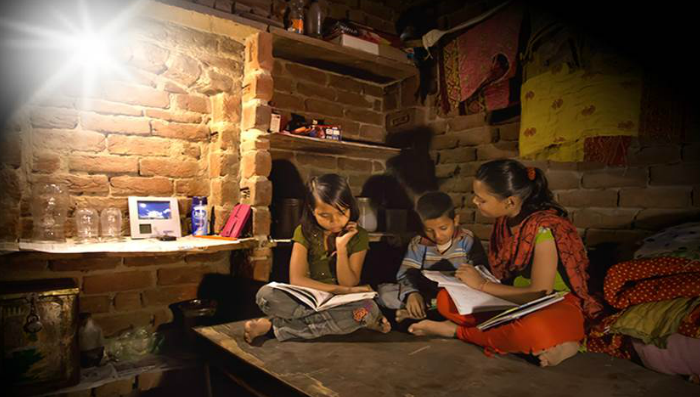Simpa Networks |  India
India
Objectives
- Use historical customer payment behavior data to predict which new applicants are likely to be a good fit for their pay-as-you-go solar power systems program
Findings
- Customers that make three or fewer payments in their first 180 days have a 60% chance of having their system be repossessed.
- The team built a model that could predict whether a potential customer is likely or unlikely to keep up with payments.
- By using this methodology to approve customers, Simpa could have the potential to reduce delayed payments by almost one third (18% to 12.5%) while still accepting around 70% of the total customer pool.
Question
“With extra light, an additional 3 hours business fetches me Rs150-200 daily.”
~Wasim Ahmed, a Simpa Networks customer
Worldwide, approximately 1.6 billion people don’t have access to electricity and another 1 billion have extremely unreliable access, leaving them dependent on unclean solutions such as kerosene lanterns and battery-powered flashlights for light. In many emerging markets, this same group earns less than $10 a day, with up to 30% of their income allocated to inefficient and expensive means of accessing electricity. Simpa Networks is a technology company with a bold mission: to make modern energy simple, affordable, and accessible for everyone.
Simpa Networks is a social enterprise that provides pay-as-you-go solar power to households and small businesses in villages in Uttar Pradesh, India. Customers make a small initial down payment for a solar photovoltaic system and then pre-pay for the energy service, topping up their systems via mobile phone or with Simpa-affiliated Village-Level Entrepreneurs. Once fully paid, the system unlocks permanently, allowing the customer to have full ownership of the system and produces energy, free and clear.
Simpa approached DataKind to see could they use historical customer payment behavior data to predict which new applicants are likely to be successful at unlocking the system? This would enable Simpa to best serve its customers and better assess new customers to offer the most appropriate after-sales services and technical support.
What Happened
In a project financially underwritten by MasterCard, DataCorps volunteers Hugo Gerard, Kamalesh Rao, Mark Simithraaratchy, and Kush Varshney began analyzing data from both Simpa’s customer application form as well as their revenue management system that tracks customers’ repayment activity. Given that Simpa’s question is very similar to that of credit scoring, the team aimed to similarly develop a predictive model to help Simpa Networks identify households likely to be successful in their program.
First, they tried to understand the repayment patterns of Simpa’s customers and whether they ultimately led to a customer unlocking the system or having it repossessed. The team found that the number of recharges or payments made in the first 180 days was key. A customer that made three or fewer payments in its first 180 days had a 60% chance of having their system be repossessed.
The team then got busy prepping the customer application data to make it more uniform, given missing values and other inconsistencies, so they could analyze which characteristics of Simpa Networks’ customers might be predictive of their ability to pay off the system.
In the end, the team was able to build a model that could predict whether a potential customer is likely or unlikely to keep up with payments. That said, because Simpa Networks’ customers do not have the same kind of lengthy financial histories you might find in developed countries, incorporating additional data sources into future analyses may help increase the accuracy of the model.
Next Steps
Simpa Networks aims to serve one million customers by 2020 and data will be fueling their growth to get there. Customer usage and payment behavior data are constantly tracked, helping the organization get smarter about selecting customers and enabling them to take risks on rural farmers that some banks would be uncomfortable financing.
Simpa Networks has since developed a mobile app to make it easier to collect customer application data at the time of installation of the solar home systems, thus improving the quality of data being captured going forward. This data includes geolocation points and photos of the customers’ homes, as well as payment point identification. They found the analysis of their customers’ repayment behavior especially helpful as they try to understand what might affect different types of customers’ ability to repay – from families to farmers to small business owners. With these insights in hand, Simpa Networks will continue to refine its business processes and experiment with the best ways to reach even more people in need of reliable electricity.
Learn More
- Predictive Modeling of Customer Repayment for Sustainable Pay-As-You-Go Solar Power in Rural India
- O’Reilly’s Data and Social Good Report
- Profile of a Village Level Entrepreneur working with Simpa Networks




